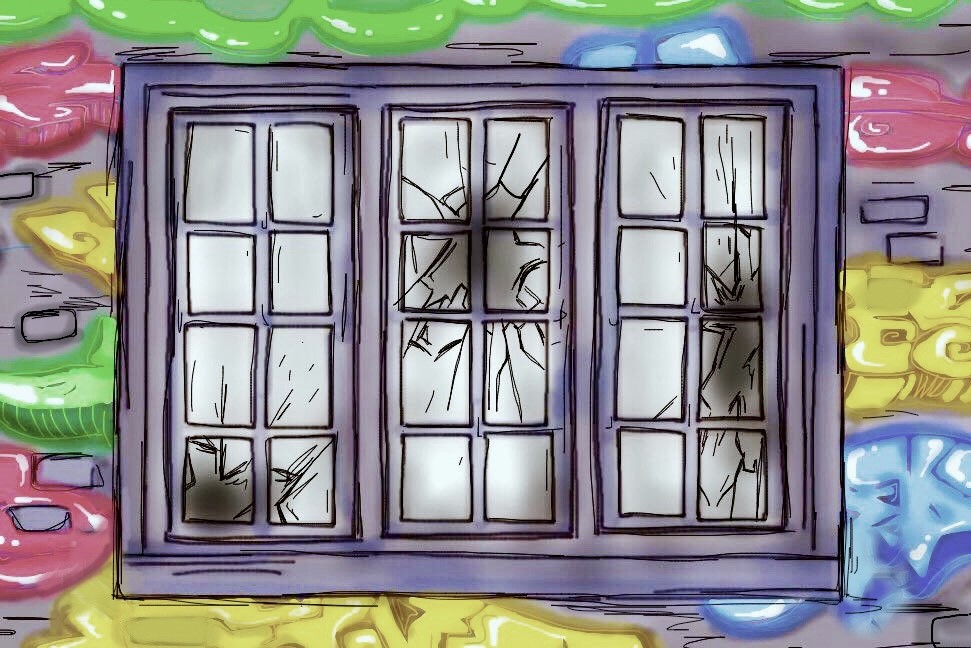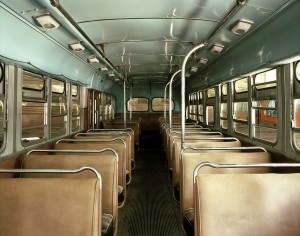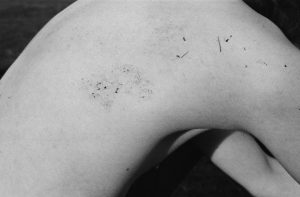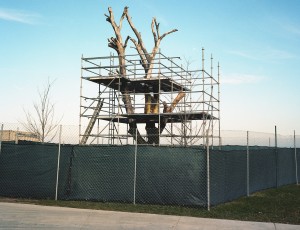
Aesthetic Unease
by Margot Harvey | May 12, 2020
Tom Collister was twenty years old when he was sentenced to two and a half years at HMP Camp Hill, a sentence cut short by his suicide in 2010. Before the government shut it down, the prison was was infamous for its incompetency and nicknamed ‘Concentration Camp Hill’ by its inmates. Human rights controversies in 2008, stemming from an overcrowding crisis and rising concern about the number of inmates denied vocational work, placed Camp Hill very much on the map as one of Britain’s worst institutions. Tom Collister hanged himself in his cell using a belt he should not have been allowed to keep. His body was found by officers who had neither read the relevant policy nor been trained in first aid. His parents called his death unintentional, a cry for help rather than a true suicide attempt. Their belief that their son would not have died had the place been properly run is difficult to deny. Yet the inquest concluded that “the tragedy of the case was the decision to imprison Tom Collister in the first place.” Collister’s crime was not murder or theft; it was weekends spent spray-painting with his friends.
Graffiti and street art have become a staple element of urban noise since their modern emergence in Pennsylvania in the 1960s. Nowadays, street art is admired by many for its refusal to fit within the conventions of any defined art market. Its location is fundamental to what it is. But this hasn’t always been the case: many see graffiti as antisocial, with the beauty of Brick Lane, Bristol, and their counterparts only being accepted into the mainstream in the last few decades. Our laws have failed to catch up with this cultural shift. Where ‘damage’ is anything less than £5000 worth, The Criminal Damage Act 1971 and Malicious Damage Act 1861 permit up to six months’ imprisonment; when it crosses that threshold, the period of imprisonment shoots up to a maximum of ten years in prison – equal to that for committing sexual assault, or creating child pornography.
Realistically, this maximum is very rarely reached, and even then is only usually given out to those who have committed irreversible damage to property. Shorter prison sentences are not uncommon for graffiti artists, though. The classic penalty is six months, and the harshest seems to be capped at two and a half years. This elasticity is useful in a sense, as it provides flexibility for the courts to match their response to the seriousness of criminal damage in question. But the maximum sentence also permits, and in a way encourages, custodial sentences for street art, in a way that no other countries in the West do. The ethos behind this overstep is simple enough: the threat of a prison sentence will reduce vandalism, and that is a win for the taxpayer. Every year £100 million in public funds is spent cleaning up 45 football pitches’ worth of graffiti which would otherwise coat Kensington and Chelsea council estates. Imprisonment acts as a deterrent and authorities make ‘examples’ of prolific artists to push this agenda, under the justification that we will all save money.
The British Transport Police has recently reformed its vandalism squad, claiming to combat an eighty-six percent increase in London’s graffiti crimes since 2016. They cite the introduction of overt and covert CCTV, highly visible police patrols, and “anti-graffiti technologies” in their plans to bounce back. Colin Saysell, unofficially elected ‘graffiti bogeyman’ and ex-poster boy for the hi-tech pursuit of artists, endorses heavy prison sentences. His descriptions of graffiti artists are littered with words like ‘evil’ and ‘ferocious’, and he is not alone in his dislike. Brian Cooke, a former TFL board member and recently suspended member of the Conservative Party, calls graffiti artists “common scum”. Members of the police force have publicly compared their hunt to a game of “cat and mouse”.
The ‘Broken Windows Theory’, initially developed by sociologists George Kelling and James Wilson, forms the backbone of anti-graffiti action. The argument is that tackling small acts of anti-social behaviour prevents a climate of crime and thus reduces the chance of more ‘serious’ crimes being committed. But policing of this nature arguably creates more problems than it solves, typically resulting in discrimination against minority communities and unnecessary strain on the system. The idea faces significant criticism. A 2016 report by police officers Peters and Eure found that in New York City the crackdown on low-level crime disproportionately affected areas occupied by black and Hispanic residents, with white residents left largely unaffected. They also established that the fall in felony crimes, which had been credited to broken windows policing, did not cease when this policing was phased out. They blamed “broad generalisations” and a lack of empirical evidence for the theory’s initial influence.
Legal theorist Bernard Harcourt was one of the first to shatter ‘broken windows’ in 2005, citing the countless social, cultural, and economic factors which impact the prevalence of crime and had been largely ignored by Kelling and Wilson. The stimuli historically responsible for increases in serious crime include poverty levels, job availability, and average population age, amongst others. The ‘broken windows’ hypothesis, in abstract, seems somewhat sensible, but in practice, the presence of graffiti is hardly going to urge someone to rob a bank, nor is it remotely likely to be a deciding factor. His account, still somewhat controversial, has been widely rendered untenable since the early 2000s by criminologists. Kelling himself says that his theory has been “often misapplied” and regrets the actions that have been taken in its name. Built-in social prejudice might make one feel more nervous on a street coated with tags than on the clean streets of Knightsbridge, but this prioritises certain demographics over others. Aesthetic unease does not justify extensive prison sentences for young people.
The argument isn’t that street art should be decriminalised. ‘Malicious mischief’, as the courts describe it, should not be a free-for-all, but as it stands ‘punishment to fit the crime’ is being completely disregarded. Street art constitutes a crime which is non-violent and, since seventy-two percent of it appears on public rather than private property, effectively victimless. The law’s response fails to reflect this. One artist, known as Zerx, found himself incarcerated for twelve months in 2012 in the most high-risk wing of a Category B prison, normally reserved exclusively for long term and high-security prisoners. The 23.5 hours a day he recalls being locked in his cell each weekend was broken up by the educational courses he took with “people who had murdered their wives and were doing twenty-eight years in jail”. He says in interviews following his release that, even though he wasn’t “robbing a bank, killing anyone, or committing serious grievous bodily harm…” he was still sharing a prison block with murderers and rapists. Graffiti convicts claim that time in prison criminalised them more than graffiti ever did, reporting a network of criminal contacts, lack of work ethic, and no real hope for rehabilitation upon release. Collister’s case demonstrates just how severe these consequences can be.
The hypocrisy of this disproportionate response would be laughable if it weren’t disturbing. One artist recalls being asked to paint a mural for the prison in which he was serving a two-year sentence. Murals, sprinkled across cities and Instagram feeds, literally illustrate the irony of the law’s rejection of unsolicited street art. Artists who have made their name breaking the law are paid to create legal works by those who admire them. DPM, a prolific London graffiti collective, went to court in 2008 on the day the Tate Modern opened an exhibition titled Street Art, featuring selected perpetrators of criminal damage. When this was pointed out to the judge, he called the group “self-indulgent” and promptly read out their sentences. There have been dozens of examples of high profile arrests over the last decade. In recent years, custodial sentences were given to the Barton Hill Boys and Sesk, contemporaries of Banksy in Bristol. Statistics suggest that almost a thousand street artists are processed annually for graffiti damage offences.
Colin Saysell believes that graffiti artists are essentially bullies. He argues that imposing one’s will visually on other members of society constitutes bullying, and that street art boils down to an imposition of will. If forcing the public to look at things they would rather not look at is worthy of criminalisation, such a definition surely extends to those who are paying for ad spaces and filling them with images people don’t want to see. The distinction seems to be that there’s money on the table in one scenario and none in the other – a distinction that could also explain why criminal damage is acceptable when it suits mainstream tastes but otherwise warrants a decade in jail time.
High profile cases of street art selling for extortionate sums make headlines. ‘The Creative Foundation v Dreamland Leisure’ was a ground-breaking legal case that consisted of a fight over who owned a chunk of wall Banksy had ‘vandalised’ in 2015, with one party ordered to pay £100,000 in damages for their attempt to claim it. A year before, similar drama ensued after Banksy painted a piece in Clacton-on-Sea on the brink of a village’s UKIP victory, essentially calling out the residents for ingrained racism. Resenting the implication, the Council scrubbed the piece, but was quick to announce that they would be “delighted” should Banksy return to commit another act of criminal damage. Cities like London and Bristol use graffiti to haul in substantial tourism revenue. In 2010, David Cameron presented Barack Obama with a piece by Eine as diplomatic gift. The trend becomes obvious. Despite the courts stuttering that artistic merit is not a defence, in effect, street art is seen as both a criminal offence and a cash prize.
Motivated by money and ambivalent about whether artists are vandals or visionaries, the system continues to hand out unnecessary legal sanctions. In its current state, the justice system prioritises the property over the person, and, worse still, creates a structure in which prosecution occurs only where there is no profit to be made. Street art is evidence of a disturbing hypocrisy which must be outgrown, both de facto and de jure.∎
Words by Margot Harvey. Art by Holly Anderson.




